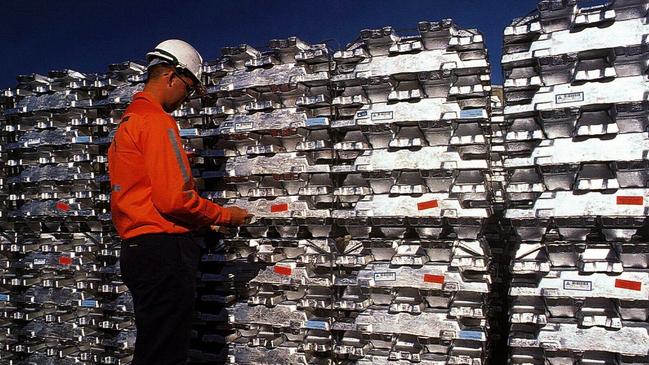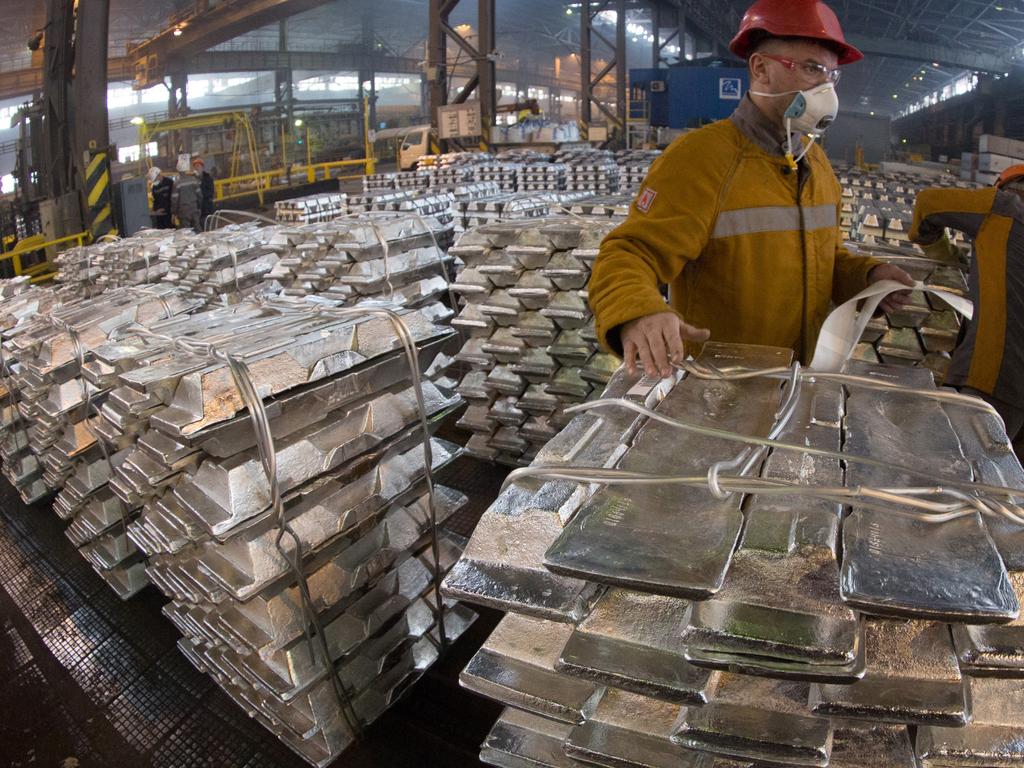Rio Tinto to close ‘uneconomic’ New Zealand smelter
A thousand jobs will go after Rio Tinto said New Zealand’s sole aluminium smelter is not viable and will close by next year.

Rio Tinto has put Australian governments and power companies on notice that long-term contracts will no longer be a barrier to it walking away from its Australian aluminium smelters, after triggering exit clauses in a New Zealand power contract and announcing the closure of its Tiwai Point smelter.
It is understood Rio’s power supply agreement with New Zealand’s Meridian Energy still had another decade to run, but the company triggered a clause allowing it to give 12 months’ notice to terminate the contract — putting the facility’s 1000 staff on notice their jobs will be gone by August 2021.
Rio aluminium boss Alf Barrios blamed high energy costs in New Zealand, saying it had not been able to secure the “power price reduction” needed to keep the smelter operating, despite the extensive negotiations.
Rio’s decision was made despite the country’s poles and wires operator flagging a potential reduction in transmission costs for the smelter, one of the major issues previously cited by Rio.
The Tiwai Point smelter posted an “underlying” annual loss of $NZ46m in 2019, after aluminium prices fell from highs of more than $US2500 a tonne in 2018 to hover around $US1750 for much of 2019.
They have since tumbled further as the coronavirus crisis hit key customers in the manufacturing sector, dipping below $US1450 a tonne in April before slowly recovering to current levels of about $US1620 a tonne.
Bank of America analysts previously labelled Rio’s New Zealand operations as its most expensive, with cash costs of production at $US1830 a tonne.
Rio’s decision in New Zealand will send a warning to its Australian operations, where the same market dynamics are in play.
While Tiwai Point is the most expensive of Rio’s local operations, Bank of America analysts say Rio’s jointly-owed Tomago smelter in NSW pays about $US1740 to turn out a tonne of aluminium, with its Boyne smelter in Queensland costing $US1750 to $US1830 a tonne, and Bell Bay in Tasmania $US1826 a tonne.
Each has similarly long-dated power contracts, with Boyne’s agreement with the Gladstone power station — partly owned by Rio — set to run until 2029, the supply agreement with AGL Energy at Tomago extending to 2028, and hydro-powered deals in Tasmania not due to expire until 2025.
Although Rio has announced a formal review of the future of its Australian smelters, as it did for Tiwai Point and has done at its Icelandic smelter, the company is believed to have looked closely at its local contracts for exit clauses and raised the matter during discussions with state and federal governments and its power providers.
Most at risk are likely to be Boyne and Bell Bay in Tasmania, which Rio operates as well as owning majority stakes — it has complete ownership of Bell Bay and owns 59 per cent of Boyne.
Although Rio also owns a majority stake in Tomago, at 52 per cent, the smelter is run independently and any decision over its future would need to be agreed on by its joint venture partners Hydro Aluminium and CSR — decisions likely to be complicated by the fact that CSR last year locked in a series of hedges on the aluminium price likely to boost its profits from the facility for at least the next year.
Wholesale energy prices have fallen to the lowest levels since 2015 and gas and coal prices on international markets have tumbled during the coronavirus crisis, but major manufacturers have complained that those prices have not necessarily flowed into the prices paid through long-term supply contracts.
Energy Minister Angus Taylor confirmed on Thursday that talks with “energy-intensive industries” were continuing.
“We consider Rio’s aluminium smelters to be crucial businesses and employers in NSW, Queensland and Tasmania,” he said.
“As you would expect, we are in ongoing discussions with energy-intensive industries about the role the government is playing to bring down prices and ensure reliability.”
But Rio’s decision in New Zealand should send a warning signal that Australia’s aluminium industry was at risk if energy prices did not come down, according to the sector’s peak industry group.
Australian Aluminium Council chief executive Marghanita Johnson said: “We’ve seen that in a COVID world keeping smart jobs here in Australia has become more valuable. People are needing that value-adding manufacturing sector to be able to pivot when the world throws a curve-ball at you,” she said.
Morgan Stanley analyst Alain Gabriel said the closure of the Tiwai Point smelter would have a “negligible impact” on Rio’s corporate value despite the estimated $NZ250m clean-up cost.
Rio shares closed up $3.13, or 3.3 per cent, at $98.67.





To join the conversation, please log in. Don't have an account? Register
Join the conversation, you are commenting as Logout